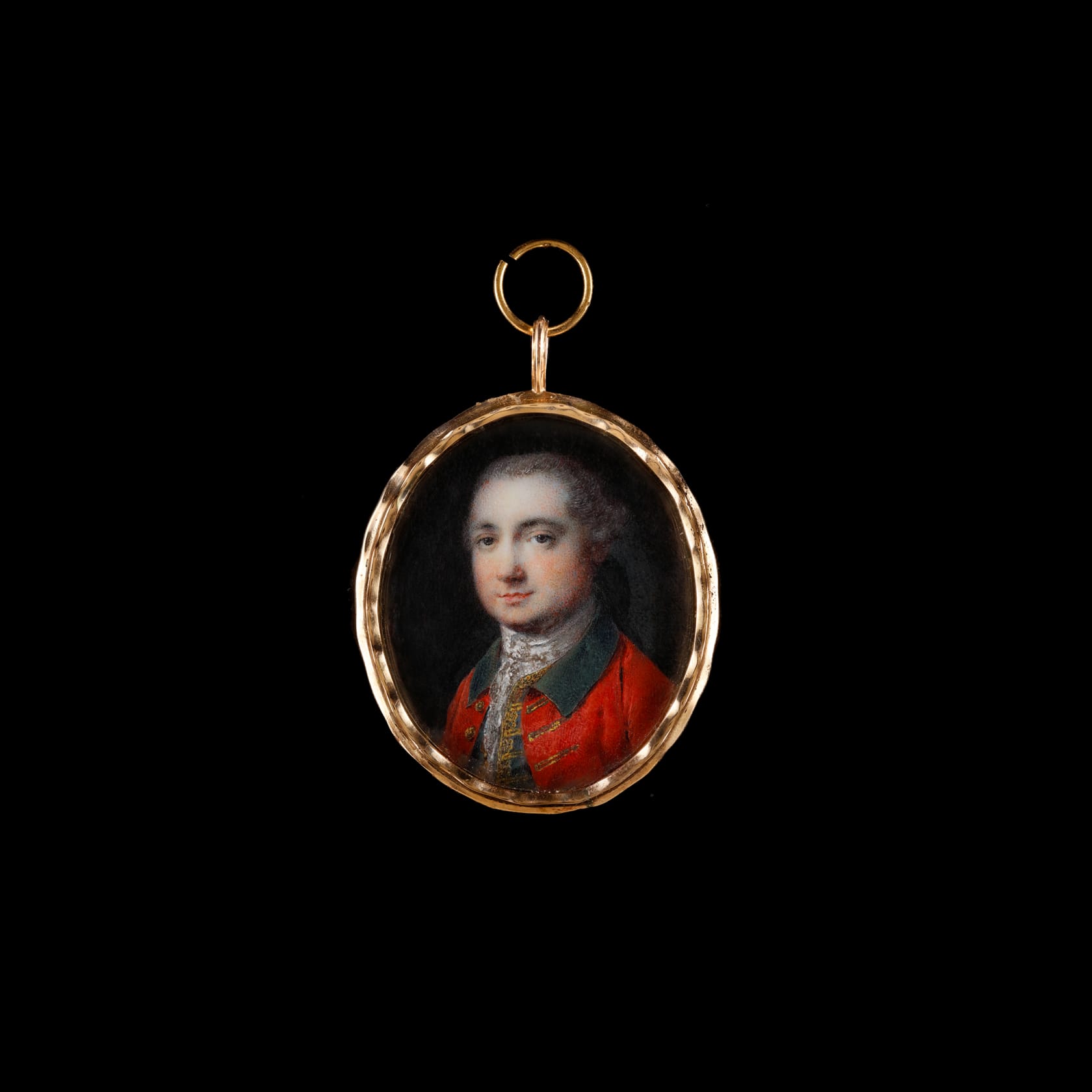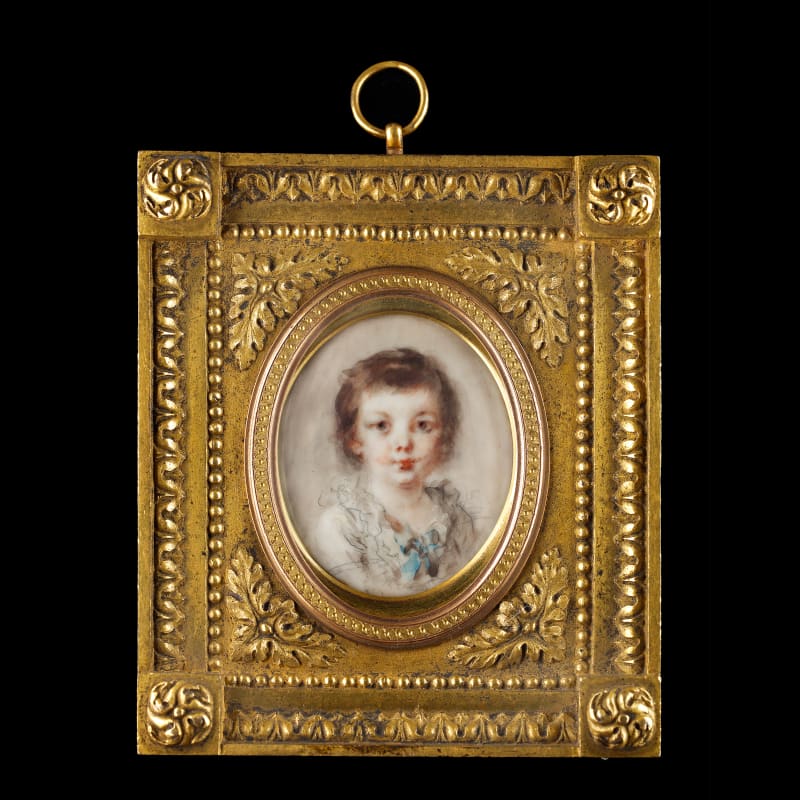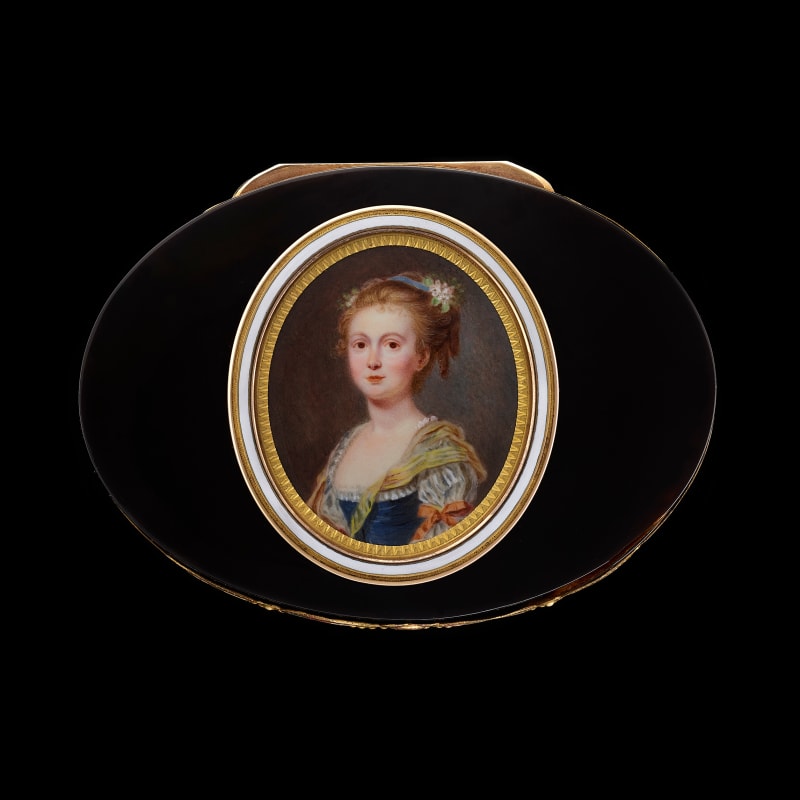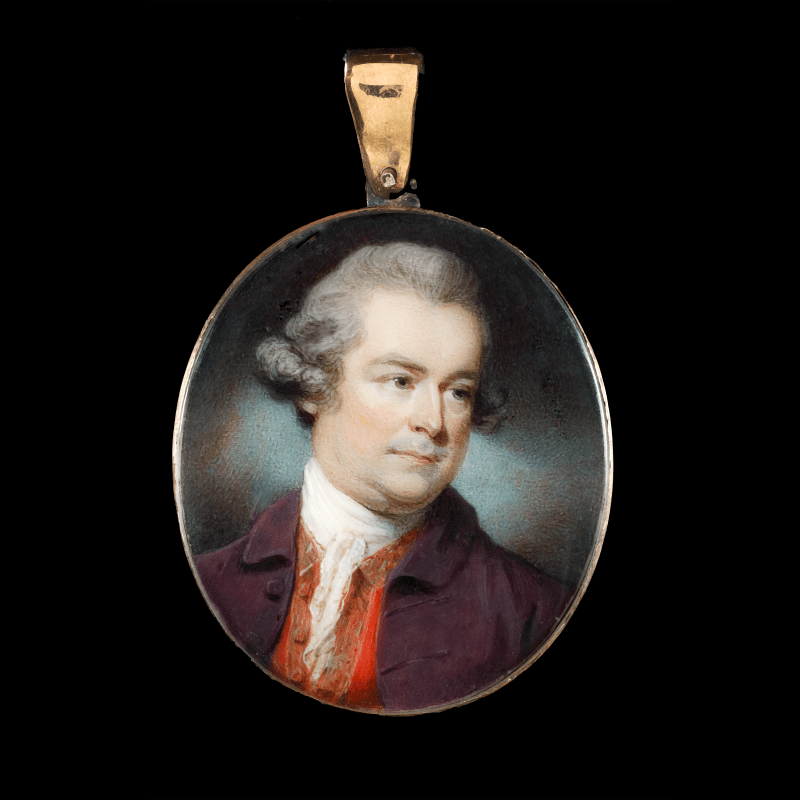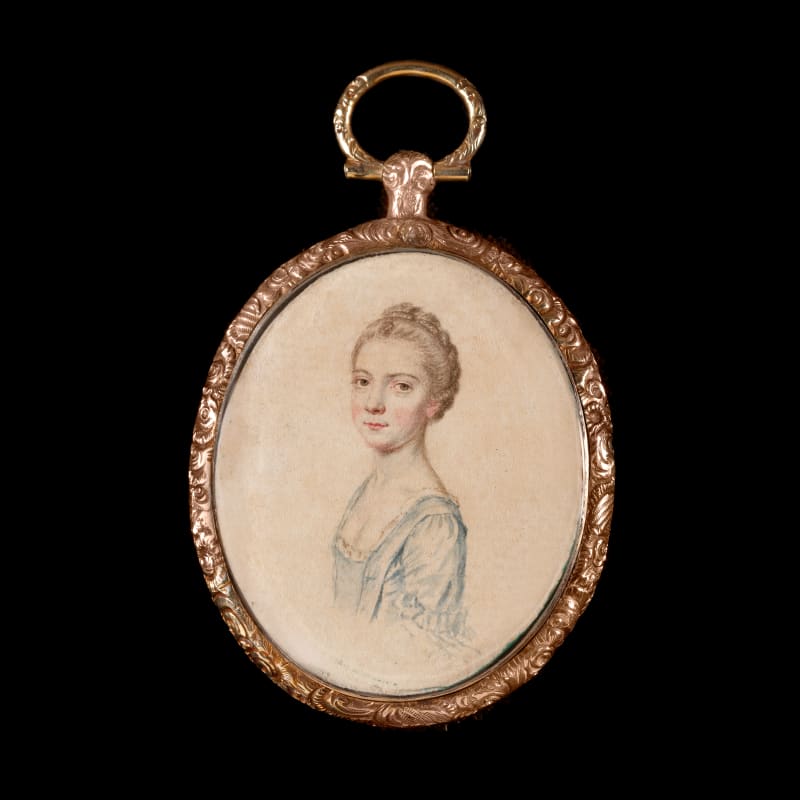We are grateful to Jacqui Ansell, Senior Lecturer Christie’s Education, for her commentary on men’s fashion which has been incorporated into this catalogue note.
The present work is a rare, signed example by the Irish-born artist Thomas Frye, who is best known as the inventor of bone-ash English porcelain and the founder of the Bow China Factory. The processes he invented changed pottery forever.1 Born in Edenderry, King’s County, Ireland in 1710, he was also a ‘clever and versatile artist’, executing portraits in oil, pastel and mezzotint – as well as producing watercolour portrait miniatures.2 He began and ended his multi-faceted career painting portraits.
Comparison with a similar signed portrait miniature of an unknown gentleman in the Victoria and Albert Museum, London, would suggest that the present portrait dates to circa 1761. This is also close in date to his self-portrait, now in the National Portrait Gallery, London (1760). Although painted towards the end of his life, the...
We are grateful to Jacqui Ansell, Senior Lecturer Christie’s Education, for her commentary on men’s fashion which has been incorporated into this catalogue note.
The present work is a rare, signed example by the Irish-born artist Thomas Frye, who is best known as the inventor of bone-ash English porcelain and the founder of the Bow China Factory. The processes he invented changed pottery forever.1 Born in Edenderry, King’s County, Ireland in 1710, he was also a ‘clever and versatile artist’, executing portraits in oil, pastel and mezzotint – as well as producing watercolour portrait miniatures.2 He began and ended his multi-faceted career painting portraits.
Comparison with a similar signed portrait miniature of an unknown gentleman in the Victoria and Albert Museum, London, would suggest that the present portrait dates to circa 1761. This is also close in date to his self-portrait, now in the National Portrait Gallery, London (1760). Although painted towards the end of his life, the portrait shows no diminishing in skill. The details of the sitter’s jacket, with the many textures recorded in paint, from the gold embroidery to the lace on the shirt, show an artist with great observational powers. His friendship with Sir Joshua Reynolds may also have influenced his interest in portraiture.3
Although at present the sitter here is unknown, from his clothing we can sense a man confident in his class and status. A stiffened stock or cravat holds his neck firm, and head erect but the more formal jacket that we have seen up until now (with curved neck rather than collar, and very large cuffs) has been replaced by a stylish frock coat. The frock coat had evolved during the 1740s as a less formal jacket and was often made in woollen cloth – an alternative to the brocaded or embroidered silk that we have seen so far. Scarlet was a particularly popular colour in the 1760s as was the use of its complementary colour green. As Rococo tastes begin to give way to neoclassicism, embellishment is limited to gold embroidery down the centre front of the waistcoat, and around the buttonholes.
Wigs were still widely worn, but it is possible that the hair we see here is the sitter’s own. Men would have their hair curled at the sides using heated lead rollers, and pomades made of apple-scented animal fat could help set the hair and receive the powder. A fine lace ruffle at the neck completes the appearance of this gentleman who has an understated elegance that evidences the beginning of a shift from the French finery of full dress. As the century progressed, in the lead-up to the French revolution, such finely tailored woollen clothing became desirable leading to ‘Anglomania’ and a French version of the frock coat with its distinctive turn-down collar and close-fitting cuffs.
Ivory Act:
This artwork has been registered by Philip Mould and Company as qualifying as exempt from the ivory act. Please contact laura@philipmould.com if you have any further queries.
Ivory Registration: FHBK9JT3
[1] W.G. Strickland, A Dictionary of Irish Artists, Irish Academic Press, Dublin, 1989., pp. 387
[2] Ibid.,pp. 385
[3] Ibid., pp. 386
